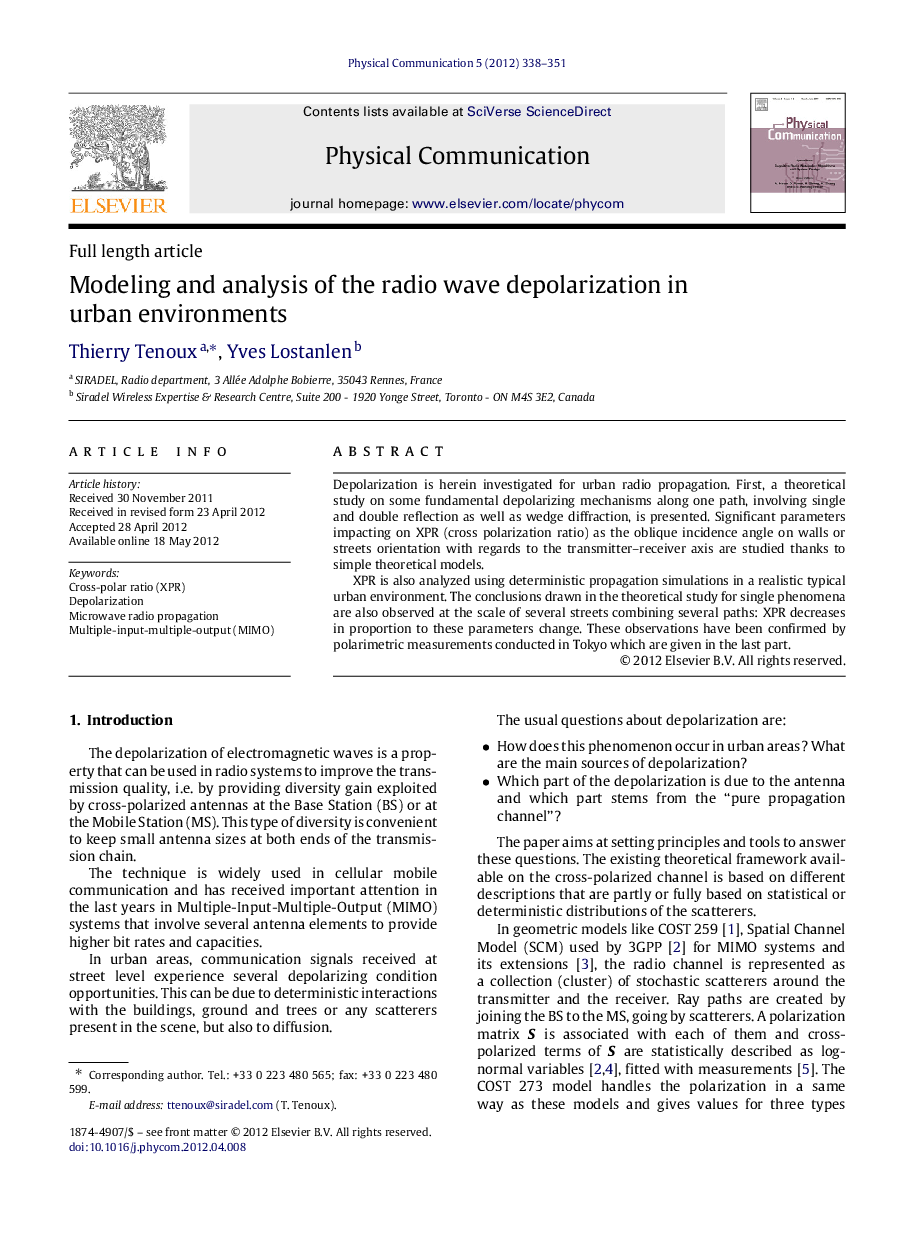| Article ID | Journal | Published Year | Pages | File Type |
|---|---|---|---|---|
| 465852 | Physical Communication | 2012 | 14 Pages |
Depolarization is herein investigated for urban radio propagation. First, a theoretical study on some fundamental depolarizing mechanisms along one path, involving single and double reflection as well as wedge diffraction, is presented. Significant parameters impacting on XPR (cross polarization ratio) as the oblique incidence angle on walls or streets orientation with regards to the transmitter–receiver axis are studied thanks to simple theoretical models.XPR is also analyzed using deterministic propagation simulations in a realistic typical urban environment. The conclusions drawn in the theoretical study for single phenomena are also observed at the scale of several streets combining several paths: XPR decreases in proportion to these parameters change. These observations have been confirmed by polarimetric measurements conducted in Tokyo which are given in the last part.
► Useful keys are given to understand the physics of depolarization in urban areas. ► Use of matrix formalism permits a clear separation of depolarizing factors. ► Depolarization depends on the street orientation and incident elevation angle.
